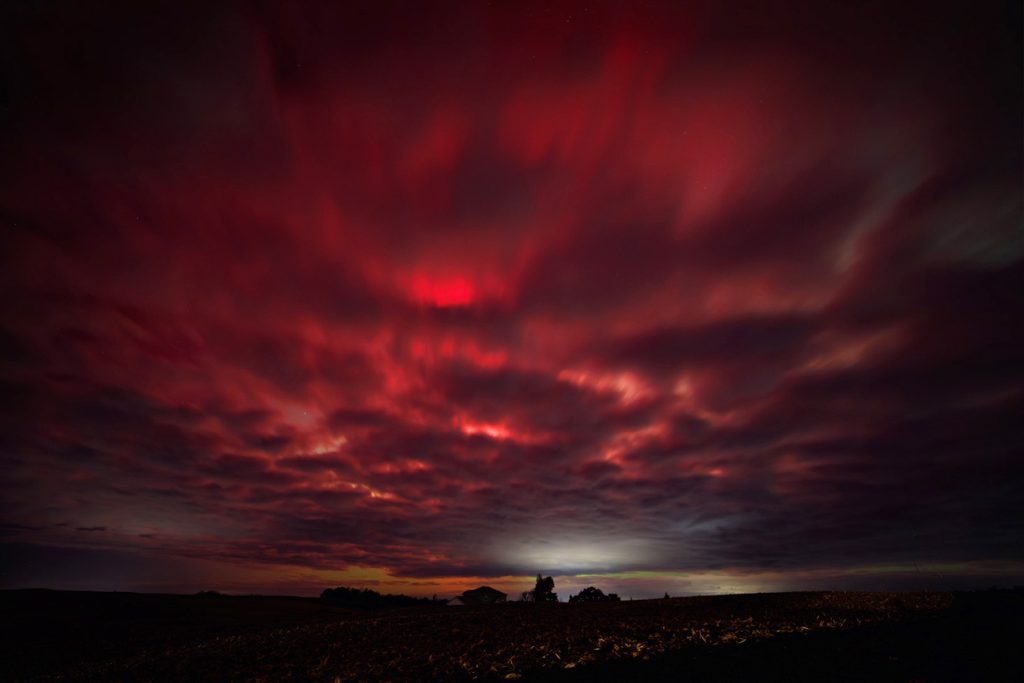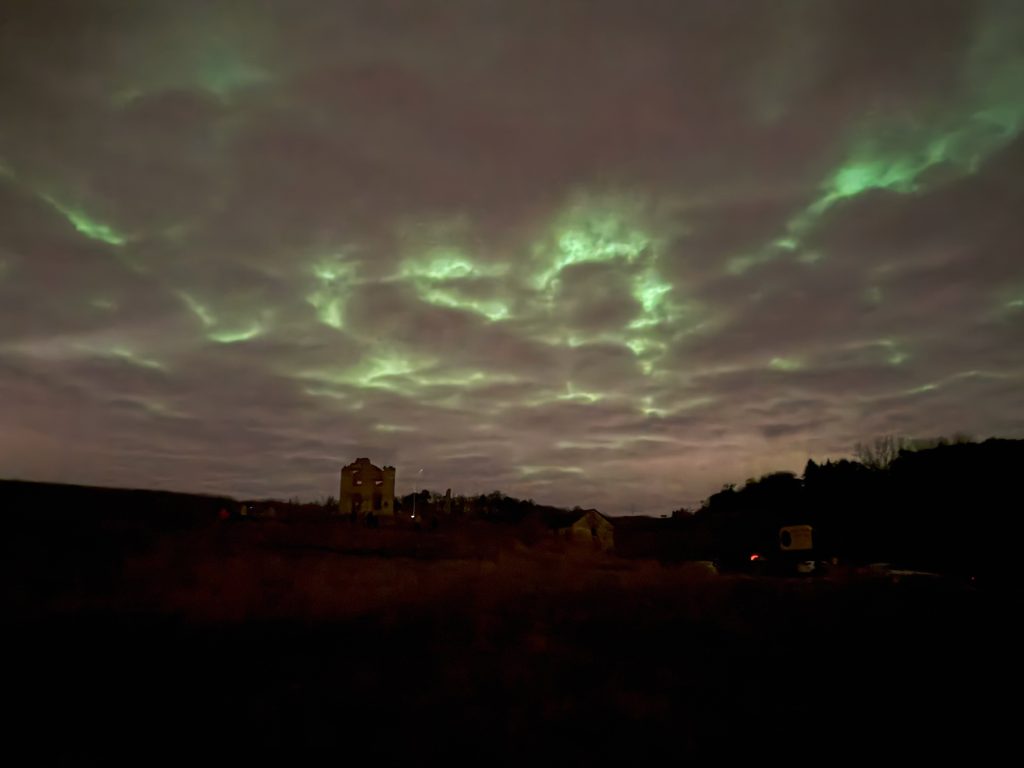
When the aurora borealis is going off, clouds are almost always the spoiler. But is it possible to see the aurora through the clouds?
Obviously you can see the northern lights through breaks in the clouds. When skies are mostly cloudy, every hole becomes an astronomer’s friend. Holes allow us brief glimpses of the heavens—planets, deep sky objects—for fleeting intervals as a cloud deck drifts overhead.
But even what appears to be an unbroken cloud deck can have segments or gaps where the cloud cover is much thinner. It may still look like a dense overcast to us, because the gaps are not sparse enough to let starlight through. But put another light source in the upper atmosphere, like aurora, and you get a spectacular effect.

During the bright northern lights display of November 11 and 12, 2025, Madison photographers Tim Hughes and Bob Hamers both snapped pics that show this effect beautifully. Both photos are shown above.
Some photographers might have skipped this shot to wait out the clouds, hoping for that next hole. Luckily for us, both Bob and Tim kept shooting and the result is a stunning example of how clouds can teach us something about the skies, and create unexpectedly beautiful photos out of what we assumed was only disappointment.
What Bob and Tim saw and snapped were likely stratocumulus clouds—low-level, lumpy clouds that are perfect for just the sort of thin gaps we need. These stratocumulus gaps are very common. We often see them during the day when a sunny sky sits above the dense clouds. It also happens on nights where the moon is full or near full, and sits above a dark cloud deck. Both occasions give rise to the mottled, interlocking pattern of lighter filaments that characterize this effect.
But to see this phenomenon with vivid greens or reds shining through from above is rare, and can only happen during a bright auroral substorm.
(Posted by John Rummel, November, 2025)
